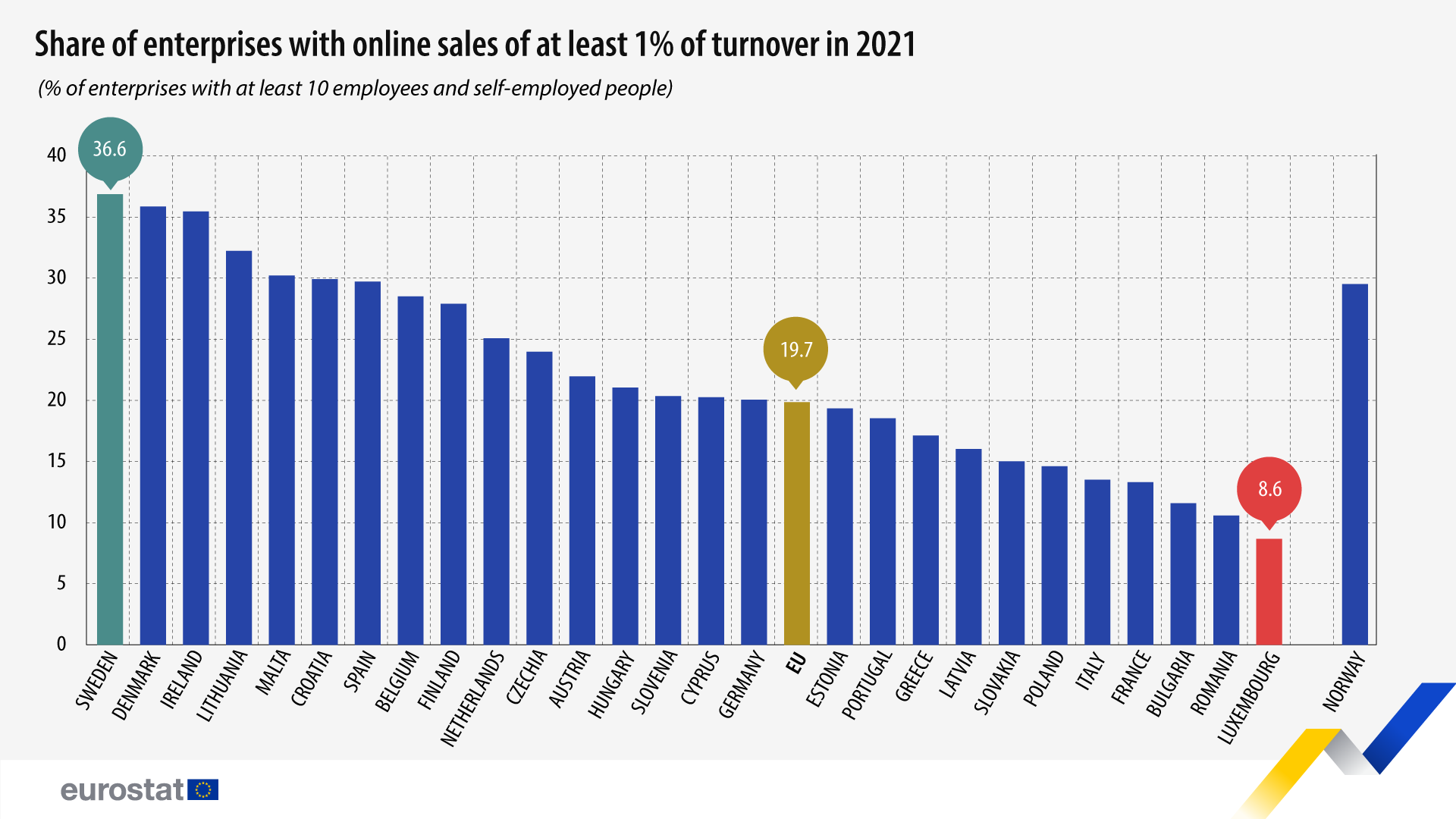Online sales continue to grow among EU enterprises
In 2021, for 19.7% of EU enterprises, the e-commerce sales reached at least 1% of their total turnover, which was 0.7 percentage points (pp) higher compared with 2020.
Sweden recorded the highest share of enterprises selling online (e-sales of at least 1% of their total turnover) among the EU members with 36.6%, followed by Denmark (35.6%) and Ireland (35.2%). On the other hand, Luxembourg (8.6%), Romania (10.5%) and Bulgaria (11.5%) recorded the lowest shares of enterprises selling online.
Source dataset: isoc_ec_esels
The highest increases in EU enterprises reporting that their e-commerce sales reached at least 1% of their total turnover in 2021 (compared with 2020) were recorded in Finland (27.7%; +4.2 pp), Spain (29.5%; +3.7 pp) and Malta (30.0%; +3.3 pp). In contrast, decreases in enterprises selling online (e-sales of at least 1% of their total turnover) were recorded in Denmark (35.6%; -2.7 pp), Greece and Belgium (17.0% and 28.3%, respectively; both -2.3 pp).
19.4% of all EU enterprises reported conducting online sales using websites or apps (web sales) in 2021, either to private consumers (15.6% of EU enterprises) or to businesses and governments (13.1%). A small share of EU enterprises used electronic-data-interchange-type sales in order to sell mainly to their business customers (6.0%). Enterprises performed their web sales through the enterprises’ own website or app (16.6%) or through an e-commerce marketplace (8.6%).
Based on the location of the customers, it was most common for enterprises to conduct web sales to customers in their own country (18.5% of EU enterprises), with less frequent web sales to customers in other EU countries (8.1%) and the rest of the world (4.6%).
For more information
- Statistics Explained article on e-commerce statistics
- Thematic section on digital economy and society
- Database on digital economy and society
Methodological notes:
- France: break in the time series due to the implementation of the statistical unit enterprise.
- Data come from the 2022 Community survey on ICT usage and e-commerce in enterprises and refer to all enterprises with at least 10 employees or self-employed persons (in NACE Rev. 2 sections C to J, L to N and group 95.1). Further methodological information related to the survey can be found here.
- The ICT usage and e-commerce in enterprises survey collects data about different ICT topics with different reference periods. For the topic of e-commerce, the reference period is the calendar year (2021) prior to the survey year (2022). For the ICT usage and e-commerce in enterprises survey, data in Eurostat’s database are organised according to the survey year and the results above can be found under year 2022.
If you have any queries, please visit our contact us page.

